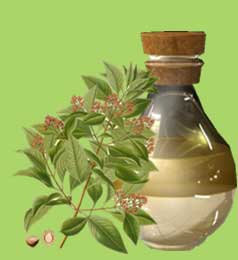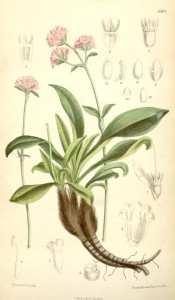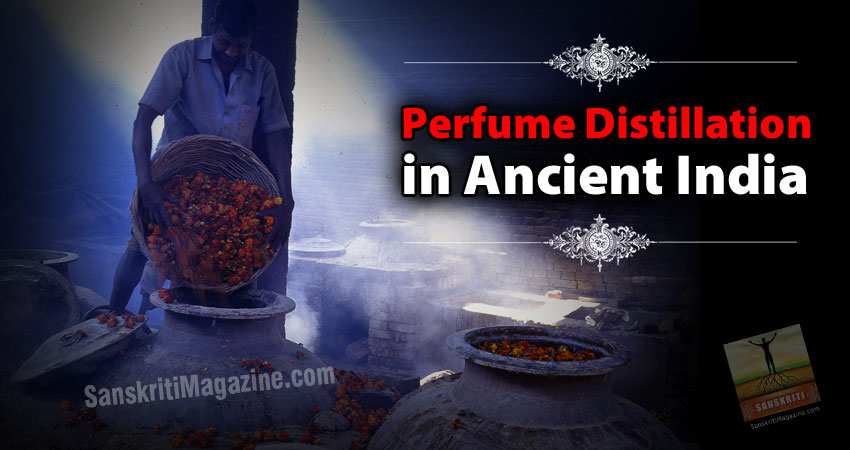“Many of the advances in the sciences that we consider today to have been made in Europe were in fact made in India centuries ago.” – Grant Duff, British Historian of India
The distillation of scents, perfumes, fragrant liquids and ointments was one area where the knowledge of chemistry was applied in India since ancient times. In fact the very word ‘scent’ which is of unexplained origin according to the Oxford Dictionary, is possibly derived from the Sanskrit term Sugandha which literally means ‘good or aromatic paste’.
This word could have been transmitted to European languages through the Greek langua which has borrowed (and lent) many words from Sanskrit. Other instances of such transmission are the English words like ‘cotton’ which is derived from the Sanskrit Karpasa or the word ‘sugar’ derived from the Sanskrit Sharkara, etc. Many present day perfumes had existed in India since ancient times and perhaps had originated here. In ancient times perfumes and fragrant ointments were of two typ viz., Teertha (liquids) and Gandha (slurries or ointments).
During the coronation of Kings or any auspicious occasion, the person was sprinkled with aromatic oils. Fragrant ointments based on sandalwood were applied during ceremonial bathing. Even today during some festivals like Diwali aromatic slurries and pastes are prepared out of a powder called Sugandhi and are used at the ceremonial bath which is taken during that festival. Even in other religious rites, Sandalwood, Ochre and Camphor are traditionally used by Hindus.
Sandalwood
 Since very early times Sandalwood and Sandalwood oil were items of export. In the Greek text of the 1st century A.D., Periplus mentions sandalwood as one of the items being imported from India. The word Sandal (wood) is derived from the Latin terms Santalum Album or Santalacae. These terms used by the Romans to describe sandalwood was, according to the Oxford Dictionary, derived from the Sanskrit term Chandana, for sandalwood.
Since very early times Sandalwood and Sandalwood oil were items of export. In the Greek text of the 1st century A.D., Periplus mentions sandalwood as one of the items being imported from India. The word Sandal (wood) is derived from the Latin terms Santalum Album or Santalacae. These terms used by the Romans to describe sandalwood was, according to the Oxford Dictionary, derived from the Sanskrit term Chandana, for sandalwood.
The Sandalwood tree is native to India and is found mainly in South-western India in the state of Karnataka. Sandalwood has been a known item of export from India since ancient times. Authors of Sanskrit texts on botany which in Sanskrit is called Vanaspati-Shastra had classified Sandalwood into three types viz. white sandalwood Shrikanda (which perhaps is an abbreviation of the term Shewta-Chandana), the second is yellow sandalwood or Pitta-Chandana and the last is red sandalwood or RaktaChandana.
Mention of Sandalwood in the Periplus is perhaps the earliest available western reference to Sandalwood. It has been mentioned in later times by Comas Indiwpleustes in the 6th century A.D. as Tzandana and thereafter it is frequently referred to by Arab traders. Oil was also extracted from Sandalwood. This oil which was a thick but refined liquid was extracted in specially constructed oil mills called Teyl-Peshani and Teylena-Lip. The oil extracted from these mills was a thick, dark yellow liquid. Along with Sandalwood, its oil was also an item of export from India in ancient times. Sandalwood oil was mainly bought by the Romans between the 1st and 3rd centuries A.D.
Musk
Musk is also a fragrant substance which is secreted in the gland by a male musk-deer. Musk is reddish-brown in colour, is used as a base for perfumes and also as an ingredient for soaps to give it a musky smell. In Sanskrit, Musk is known as Muska which means the scortum i.e. the pouch of skin containing the testicles of the deer. The English term Musk originates from the Sanskrit term Muska according to the Oxford Dictionary.
The Sanskrit word Muska is perhaps derived from the words Maunsa or Masa which means ‘flesh’. In Sanskrit, other words used for musk are Kasturi, Kastutrika and Mruga-Nabhi. The last term literally means ‘a deer’s navel’.
Tamarind
Tamarind is a fruit whose acid pulp is used in the making of cooling or medicinal drinks. The English word Tamarind is derived from the Latin term ‘Tamarindus Indica’ which is derived from the Arabic term Tamr-Hindi meaning ‘Dates from India’. The Arabs were familiar with only one form of fruit i.e. Dates, which grow in the desert. Thus when they came across another fruit which they could use in the making of cool refreshing drinks they named it ‘Dates from India’ Tamr-Hindi; after the country from where they had obtained the fruit. In Sanskrit, Tamarind is called Chincha and Amlica. The latter term is derived from the word Amlica which means acidic. This name is given to Tamarind due to the acidic odour and juice that it has. This fruit was an item of export from India since ancient times. The fact that it originated in India is evident from the name Tamr-Hindi which the Arabs gave it.
Camphor
Camphor is a whitish translucent crystalline volatile substance with aromatic smell and bitter taste. It is also used in pharmacy as a medicinal drug. The word camphor is derived from the Latin word ‘Camphora’ which comes from the Arabic term Kafur, which ultimately originated from the Sanskrit term Karpuram, according to the Oxford Dictionary.
The Sanskrit words for Camphor, apart from Karpuram are Hima-Valuka, literally meaning ‘Snow-sand’ and Chandraka which means ‘like a moon’ perhaps because it is whitish and translucent. Camphor was also an item exported from India since ancient times. The Camphor that was exported was not in its natural form but it was refined and cut into strips and square pieces before being loaded for export. That it was mainly obtained from India is established by the fact that the name chosen for this commodity was the corrupted version of the original Sanskrit term. Even today Camphor is used by devout Hindus as an incense during prayer.
Spikenard
 Spikenard was a costly aromatic ointment extracted since ancient times from an Indian plant known in Sanskrit as Nardostachys Jatamansi which perhaps means ‘the braid of hair (Jataa) of (Narada). The English word Spikenard is derived from the Greek term Nardostakhus and the Latin term Spica Nardi; both the terms are derived from the Sanskrit term Nardostachys Jatamansi. This plant has purplish-yellow flower heads and is very rarely found. Its smell is quite pleasing and hence it had been in great demand for centuries.
Spikenard was a costly aromatic ointment extracted since ancient times from an Indian plant known in Sanskrit as Nardostachys Jatamansi which perhaps means ‘the braid of hair (Jataa) of (Narada). The English word Spikenard is derived from the Greek term Nardostakhus and the Latin term Spica Nardi; both the terms are derived from the Sanskrit term Nardostachys Jatamansi. This plant has purplish-yellow flower heads and is very rarely found. Its smell is quite pleasing and hence it had been in great demand for centuries.
In Sanskrit, other terms used to refer to this plant are, Jatila which means ‘difficult’, Tapasvini which literally means ‘concentration and devotion’. These words used to describe Spikenard indicate that it was very difficult to obtain and cultivate this plant. In India this herb was available only in the Himalayas. Spikenard, which is aromatic and bitter, yields on distillation a pleasant smelling oil.
In India, it had been used since ancient times as an aromatic adjunct in the preparation of medicinal oils and was popularly believed to increase the growth and blackness of hair. The Roman historian Pliny observes the Spikenard was considered very precious in Rome and it was stored in alabaster boxes by persons of eminence.
Costus
Costus is the root of the plant Saussurea Lappa, a tall perennial plant growing on the open slopes of the vale or Kashmir and other high valleys of that region. The plant is found at elevations of 8000 to 13000 feet. It was used by the Romans as a culinary spice and also as a perfume.
This root was dug up and cut into small pieces and shipped to Rome and China. The root is generally the size of a finger with a yellowish woody part and a whitish bark. It is said that Seleucus Callinicus had obtained Costus from India and sent it as gift to the Milesians. The Romans also referred to costus as radix, the root distinguished from Nard which was called folio the leaf. The price of Costus in Rome is stated by Pliny to have been 5 denarii per pound.
India still exports Costus and today the collection of Costus is a state monopoly. In Kashmir the product is used by shawl merchants to protect their fabrics from moths. The Indian origin of Costus is evident from the fact that the word is derived from the Sanskrit term Kustha which means ‘that which stands in the earth’. This word was perhaps used as Costus was a root.
Macir
Macir is mentioned by Dioscorides as an aromatic bark. Pliny says that it was brought from India. He describes it as a red bark growing upon a large root, which bears the name Macir from the tree that produced it. He prescribed a mixture of this bark with honey as a cure for dysentery. The word Macir is today neither found in the English nor the Sanskrit Dictionaries but it has been mentioned in the Periplus on pages 80 and 81.
The word Macir has been said to have been derived from the Sanskrit word Makara which in India was said to have been used in ancient times as a traditional Ayurvedic remedy for dysentery. Macir seems to have been the root-bark of the tree Holarrhena Antidysentrica which according to the notes appended to the Periplus was found throughout India and Burma in the lower Himalayas upto 3500 feet.
Both the bark and seed of this tree were among the most important medicines in the Ayurvedic system of medicine. According to the notes of Periplus. “This tree found by the Portuguese was called ‘Herba malabarica owing to its great merit in the treatment of dysentery they having found it on the Malabar coast. The preparation, generally in the form of a solid or liquid extract, or of a decoction, is astringent, anti-dysenteric an anthelmintic. The seeds yield a fixed oil, and the wood ash is used in dyeing.”
Thus this commodity which was exported from India in early times had multiple uses.











